- Aller à la navigation principale
- Skip to content
- Aller au pied de page
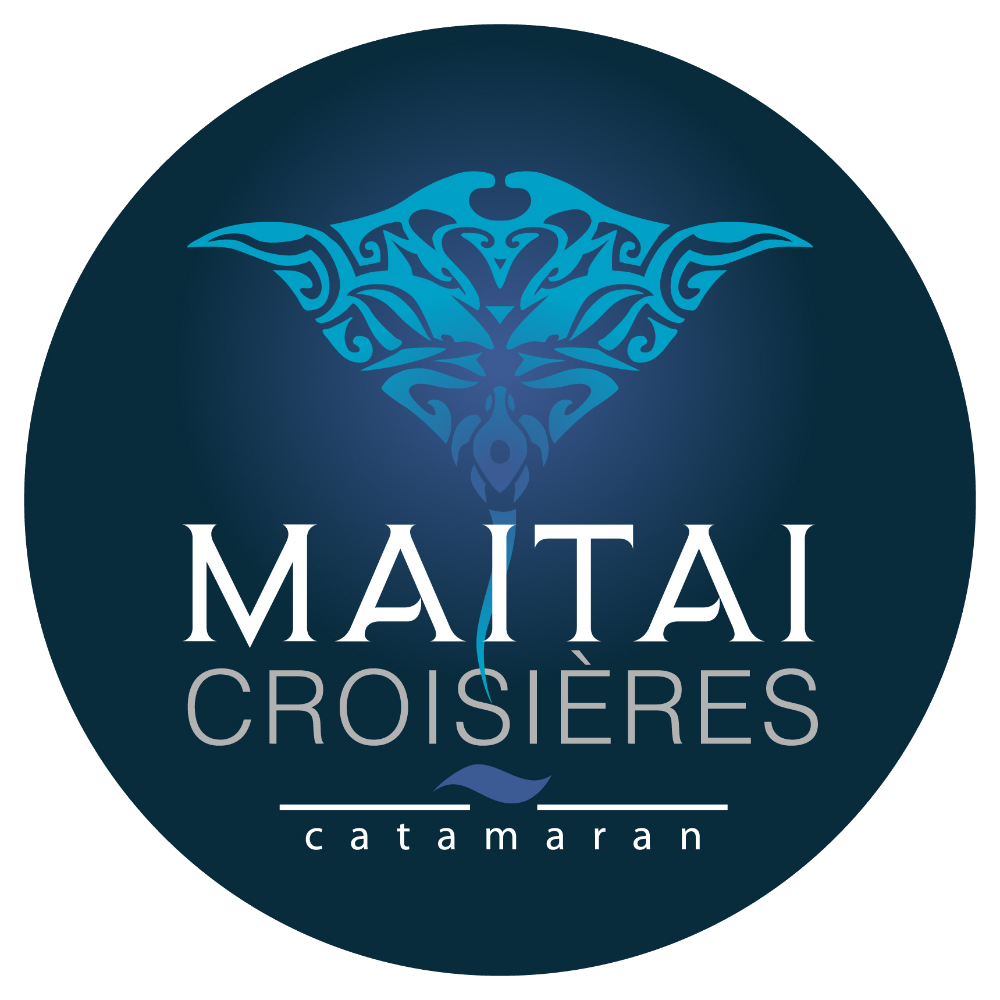
Maitai croisières
Découvrez le lagon de Mayotte sur le catamaran Maitai


DECOUVREZ LE LAGON UNIQUE DE MAYOTTE SUR UN CATAMARAN EXCEPTIONNEL, MAITAI

Equipement de pont Bains de soleil sur roof et salon avant Douche de pont eau douce chaud/froid Grande annexe 3,5 m + 25 cv Sonorisation extérieure
Loisirs 2 compresseurs électriques plongée Bauer 8 blocs de plongée 12 l Scubapro Hydrophone pour écouter le chant des baleines 1 Paddle Palmes Masques Tuba Jeux de société Bibliothèque

Présentation Mayotte est un ensemble d’îles situé dans l’archipel des Comores, lui-même situé dans le canal du Mozambique et dans l’océan Indien. Mayotte est constituée de deux îles principales, Grande-Terre et Petite-Terre. Comptant parmi les plus grands lagons fermés du monde, celui de Mayotte est un havre de paix où les espèces sous-marines foisonnent. Avec ses 1100 km2, pas étonnant donc qu’il soit devenu le paradis des plongeurs, grâce à de nombreux spots mondialement reconnus. En plus de sa barrière récifale de 195 km, le lagon mahorais présente également une barrière corallienne interne.
Informations Mayotte est un département français et un archipel de l’océan Indien situé entre Madagascar et la côte du Mozambique. Capitale : Mamoudzou. Indicatif téléphonique : +262. La saison sèche (ou fraîche) s’étend d’avril à novembre où les températures vont de 24 à 28°C, avec peu de précipitations, la saison des pluies (ou chaude), le reste de l’année les températures montent à 35°C certains jours.

La faune L’extraordinaire richesse de la faune de Mayotte provient particulièrement du fait que l’île aux parfums est encore une destination préservée du tourisme de masse. C’est ainsi que vous pourrez facilement admirer dans les eaux turquoises du lagon les balistes, poissons clowns, coffres, mérous, capitaines et bien sûr l’hippocampe, symbole de Mayotte. Si la faune y est importante sous l’eau, elle est aussi très présente sur terre. Deux des premiers animaux que vous ne manquerez pas d’apercevoir sont les makis -des lémuriens- et des chauves-souris frugivores.
La Flore L’île aux parfums affiche une richesse floristique unique: Cocotiers, ylang-ylang, arbres à pain, frangipanier, bananiers, hibiscus, jaquier, vanille, badamiers et le fameux baobab. C’est l’arbre incontournable. Il est présent dans tous les villages, en bordure des plages, dans les forêts ou il s’accommode des tulipiers du Gabon, des tamarins, des takamakas, des fromagers, des manguiers…
- Motorcycles
- Car of the Month
- Destinations
- Men’s Fashion
- Watch Collector
- Art & Collectibles
- Vacation Homes
- Celebrity Homes
- New Construction
- Home Design
- Electronics
- Fine Dining
- Baja Bay Club
- Costa Palmas
- Fairmont Doha
- Four Seasons
- Four Seasons Private Residences Dominican Republic at Tropicalia
- Jacob Cohën
- Reynolds Lake Oconee
- Wilson Audio
- 672 Wine Club
- Sports & Leisure
- Health & Wellness
- Best of the Best
- The Ultimate Gift Guide
This New 164-Foot Explorer Catamaran Concept Will Let You Travel the Far Corners of the Globe in Luxury
The yard says the go-anywhere multihull can remain self-sufficient for months on end. it's also easy on the eyes., rachel cormack.
Digital Editor
Rachel Cormack's Most Recent Stories
- A Vintage Gold Baume & Mercier Watch Elvis Presley Gave Dodie Marshall Is Heading to Auction
This New 220-Foot Custom Superyacht Is Topped With an Epic Jacuzzi
- Cillian Murphy Is Now the Face of Versace Menswear
- Share This Article

A catamaran may not be your first vessel of choice for a global expedition, but Sunreef Yachts is hoping to change that.
The Polish shipyard has just revealed a new go-anywhere multihull concept designed specifically for long-range cruising. The 164-footer is the second model in the Sunreef Explorer line, following a 125-footer that was released back in 2020.
Related Stories
- Audi Just Unveiled the New All-Electric Q6 E-Tron SUV. Here’s What We Know.
- Metallica Is Touring With Electric and Hydrogen-Powered Trucks Wherever They May Roam This Summer
- Open Space, Eco-Friendly Tech: What a Rising Class of Millennial Superyacht Owners Looks For
Named simply the 50M Sunreef Explorer , the cat promises transoceanic range just like her predecessor and is likely to cover more nautical miles than monohulls of a similar size. The yard didn’t share any specs at this stage, but says the vessel will be equipped with two engines, two fuel tanks, multiple generators, two water tanks and a smart waste management system. As such, she will be able to remain self-sufficient for months on end and journey to the most remote corners of the Earth.

The infinity-style pool overlooks the ocean. Sunreef Yachts
As to be expected, the global cruiser sports Sunreef’s signature sleek silhouette and clean lines. Onboard, meanwhile, you can expect “superyacht comfort,” with six sizable staterooms, a private spa, a fitness center and an outdoor cinema with a bar. Another highlight is the aft deck, which spans the entire 47-foot beam and offers oodles of space for alfresco entertaining.
Just like any explorer worthy of the class, there will be a full arsenal of toys aboard to ensure even the most die-hard adventurers never get bored. The generous garages can accommodate diving gear, sea bobs, e-bikes, e-foils, sailing dinghies and tenders, while the cranes allow for easy launch and recovery. Naturally, every detail of the yacht’s design and equipment can be tailored to meet the requirements of her new owner.
“From mountain biking in Greenland, diving in Ushuaia, horseback riding in Galapagos or whale-watching in Newfoundland, the new Sunreef 50M Explorer is dedicated to all those who dream of expanding their yachting horizons,” the yard said in a statement .
Explorer catamaran, indeed.
Check out more photos below:

Sunreef Yachts

Rachel Cormack is a digital editor at Robb Report. She cut her teeth writing for HuffPost, Concrete Playground, and several other online publications in Australia, before moving to New York at the…
Read More On:
More marine.

‘People Don’t Want to Be Inside’: How the Outdoors Became Yachtmakers’ Most Coveted Design Element

This Custom 112-Foot Trideck Superyacht Feels Bigger Than It Actually Is

Azimut’s New 72-Foot Yacht Has One of the Largest Flybridges in Its Class. We Hopped Onboard.

Culinary Masters 2024
MAY 17 - 19 Join us for extraordinary meals from the nation’s brightest culinary minds.
Give the Gift of Luxury
Latest Galleries in Marine

The 10 Most-Exciting Yacht Debuts at the Palm Beach International Boat Show

‘Lady A’ Superyacht in Photos
More from our brands, college basketball stars front new skims’ men’s terry collection campaign, draftkings claims ‘double agent’ shared docs at fanatics ceo home, george lucas backs disney board and ceo bob iger amid proxy fight: ‘creating magic is not for amateurs’, judy garland’s ruby slippers head to auction, warhol foundation settles copyright dispute, vienna gets an actionist museum, and more: morning links for march 19, 2024, the best yoga mats for any practice, according to instructors.
Stai usando un browser vecchio . Ti conviene aggiornarlo per migliorare la tua esperienza di navigazione su questo e altri siti.

Mayotte - Charter holidays, sailing yacht and catamaran cruises

Mayotte is an archipelago kissed by the waters of the Indian Ocean and belonging to the French overseas territories. It is formed by two main islands, Grande Terre and Petite Terre , which together cover 376 km 2 . It's incredible that such a small piece of world includes everything you need to live your unforgettable vacation!
Indeed, the archipelago offers stunning sandy beaches coloured by majestic green palms that offer a shelter from the warm sun, and a crystal-clear sea , where snorkelling and scuba diving lovers will find their paradise. In fact, these islets are surrounded by a gorgeous coral reef, which is home to colourful fish species , while offshore it is possible to admire lovely dolphins and, especially from July to October, whale and sperm whale. On the other hand, the inland also hosts wonderful, rare, and particular animals, such as lemurs and several bird species .
Anyway, Mayotte is not only the right place for relaxing and admiring the natural wonders, since it has much more to offer, such as the solid culture that characterizes local people. The towns still preserve some architectural examples belonging to the colonial period and interesting museums , but also typical handicraft districts and traditional villages.
Discover our tailormade tours and vacations and experience your holiday among the islets of Mayotte.
- cenni generali
- Practical information
- When to go and climate
- Health & Safety
- Arriving and moving into the country
Cookies help us provide our services. By using these services, you accept our use of cookies. Read more.
- 0 Aucun produit au panier
- Petites annonces
- Fiches techniques
- Destinations
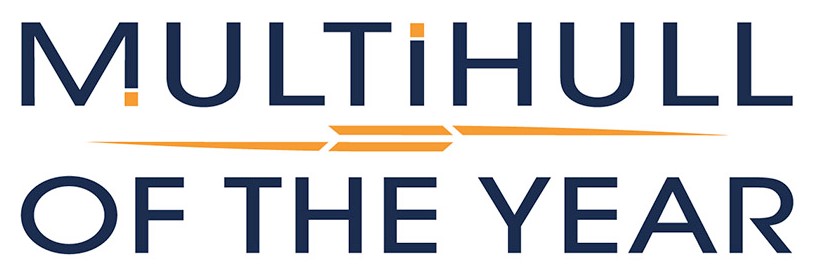
- Tous les magazines
- Cartes postales
Mayotte est, depuis mars 2011, le 101e département français... Mais cette île est surtout une destination unique au monde, de par son immense et magnifique lagon.
Carnet de bord
Imaginez : un lagon de 1400 km2 avec une double barrière de corail, un espace tantôt très large, vous donnant l'impression de naviguer au large, tantôt très proche de la terre. Ce lagon est par ailleurs très profond, devenant pour nombre d'espèces marines un véritable sanctuaire. Mayotte est donc le paradis des baleines à bosse, dauphins et tortues marines, et vous n'oublierez pas de sitôt vos navigations dans ce véritable éden. Nichée à l'extrême nord du canal du Mozambique entre la côte est de l'Afrique et Madagascar, Mayotte se situe entre l'équateur et le tropique du Capricorne. Elle est composée de deux îles, Grande Terre et Petite Terre ainsi que d'une trentaine d'îlots, avec un relief érodé et peu élevé. 200 000 habitants vivent à Mayotte sur un territoire de 376 km2, situé à 1500 km de la Réunion et 8000 km de Paris. Mayotte est un ancien volcan sorti de l'océan Indien. Au nord de Petite Terre, le Dziani Dzaha (lac du volcan) témoigne de ce passé géologique. C'est un cratère volcanique aujourd'hui occupé par un lac vert émeraude aux eaux sulfureuses. L'archipel est protégé du courant d'alizé oriental par l'île de Madagascar et bénéficie d'un climat tropical maritime animé par deux saisons ; sèche et tempérée de mai à octobre (moyenne de 24°C) : l'hiver austral, et une saison chaude ou « saison des pluies » de novembre à avril (moyenne de 27°C) : l'été austral. A noter que l'eau du lagon ne descend jamais sous les 24°C... Véritable paradis des naturalistes, hors des sentiers battus et du tourisme de masse, Mayotte a su préserver son milieu naturel. Flore luxuriante aux senteurs exotiques : baobabs, flamboyants, bambous géants, tulipiers du Gabon, takamakas ou badamiers habitent les forêts humides et sèches du nord au sud de Grande Terre. On y trouve également une cinquantaine d'espèces d'orchidées dont la plus connue est la vanille. Autour de ces forêts, les hommes ont cultivé l'ylang-ylang, le girofle, la cannelle, la muscade ou le poivre qui ont fait par leur diversité et leur qualité, la renommée de l'île, longtemps surnommée l'Ile aux parfums. Indispensable à l'écosystème du lagon, la mangrove, très présente à Mayotte, représente un patrimoine protégé d'exception. Comptant 750 hectares, elle agit comme filtre naturel des eaux et offre aux différentes espèces un espace paisible pour la nidification de nombreuses espèces d'oiseaux et la protection des alevins de 70 % des poissons du lagon. Mayotte brille aussi par la richesse de sa faune endémique : makis et lémuriens frugivores se chamaillent les papayes avec les roussettes, chauves-souris de près d'un mètre d'envergure.
Itinéraire type
Si la destination est paradisiaque, il n'y a pas (encore) de loueur de catamarans habitables sur place. Et comme souvent depuis maintenant près de 25 ans, ce sont nos amis de Sail Explorer (Hobie Cat Aventure) qui ont découvert le spot. L'idée est donc de proposer des raids en autonomie complète sur des catas de sport pour découvrir une destination unique et vraiment originale. Deux raids sont proposés dès cet été : Une formule classique en 9 jours dont 6 jours de navigation et une journée jour libre, et une formule XL de 12 jours dont 8 jours de navigation et 3 jours libres pour découvrir aussi l'intérieur de l'île. Après l'arrivée à l'aéroport de Mayotte et le transfert sur la base Sail Explorer de Mtsangabeach située au sud-ouest de l'île, vous vous installez dans le camp de base, véritable lodge "à l'africaine" (tentes de safari, mobilier de safari avec accès douches et toilettes) au milieu d'une cocoteraie de rêve. Ça commence bien... Le raid en cata se déroule sur des Hobie Cat 18 ou 16 équipés de spi et de double trapèze. Un bateau suiveur transporte vos affaires au sec pour aller de bivouac en bivouac, afin que vous n'ayez comme souci que de profiter de la nav... Puisque nous parlons de navigation, sachez que le raid requiert la maîtrise d'un catamaran ou d'un dériveur à toutes les allures par vent modéré. Mais il est possible d'accueillir des débutants si vous vous inscrivez avec un barreur confirmé. Une bonne condition sportive est nécessaire (et suffisante) pour profiter pleinement du safari. Enfin, et c'est l'évidence, il est impératif de savoir nager... Le raid en lui-même consiste en un tour de Mayotte par le lagon, la météo guidant le sens. Les grands moments de votre aventure : - Navigation vers la baie d'Hagnoundrou et visite de la cascade de Soulou (12 milles). - Escapade au Mont Choungi qui domine l'île-Grande, étape vers la réserve de Saziley, observation de la ponte des tortues (12 milles). - Passage par l'îlot Bambo situé au milieu du grand lagon, navigation autour de l'îlot Brandelé et observation des baleines et des dauphins (15 milles). - Grande étape de 27 milles pour rallier l'îlot Mtsamboro... - La dernière étape permet de contourner la Grande Terre par le nord pour un tour complet avec passage devant Petite Terre, descente au portant vers l'îlot de Sable Blanc et retour à la base de départ... (de 20 à 25 milles). Et pour ceux qui souhaitent prolonger leur découverte de Mayotte, il est possible de rester dans le lodge et d'organiser des plongées sous-marines dans le lagon (passe en S), des survols de l'île en ULM et des journées en forêt avec un guide naturaliste.
S'y rendre : Vols directs depuis Paris CorsairFly, via la Réunion avec Air Austral, via Madagascar avec Air Madagascar et Kenya Airways via Nairobi. Le vol dure une dizaine d'heures en direct. Météo : Mayotte offre un climat idéal pour la navigation : un alizé régulier, atteignant au maximum les vingt nœuds, un climat sec et doux en été, n'excédant pas les 27°C, le tout baigné d'un océan chaud, et protégé par une barrière de corail immense... On va a dit que c'est le paradis ? Concrètement, la saison sèche va de mai à octobre (moyenne de 24°C) et la saison chaude, plus humide, de novembre à avril. Formalités : C'est un département français... Passeport en cours de validité pour les ressortissants européens. Recommandation sanitaire Aucune vaccination n'est exigée. Mais avoir ses vaccins à jour est tout de même plus raisonnable (hépatite A et B, tétanos, poliomyélite, typhoïde). Par ailleurs, même si les cas de paludisme sont très rares, il est recommandé de bien se protéger contre les moustiques... Monnaie : La monnaie est l'euro. Les cartes bleues sont de plus en plus acceptées et 35 (!) distributeurs et guichets automatiques sont implantés...
Partagez cet article
Autres destinations.

Le (demi) tour du monde d’Alizé - Troisième étape : Tristan Da Cunha/Mayotte

Malaisie : à la croisée des chemins

Phuket et ses îles…

Les tropiques du Sri Lanka

Madagascar, une île continent unique

Seychelles, paradis de l'Océan Indien
Les avis des lecteurs.
Postez un avis
Il n'y a aucun commentaire.
Suivez-nous sur
Vous avez ajouté " " à vos favoris., vous avez supprimé " " de vos favoris., pour ajouter cet article à vos favoris, veuillez vous connecter..

(215) 508-2704
- Tao Catamarans
- Dolphin Catamarans
- Voyage Catamarans
- All Pre-Owned Catamarans
- Exclusive TMC Catamarans
- Sold Catamarans
- Buying A Multihull
- Selling A Multihull
- Sailing Schools
- Yacht Charters
- TMC Newsletter
- Employment Opportunities
- Mission Statement
- Affiliations
SWISH | 1995 Voyage Mayotte 47
Georgetown, bs.
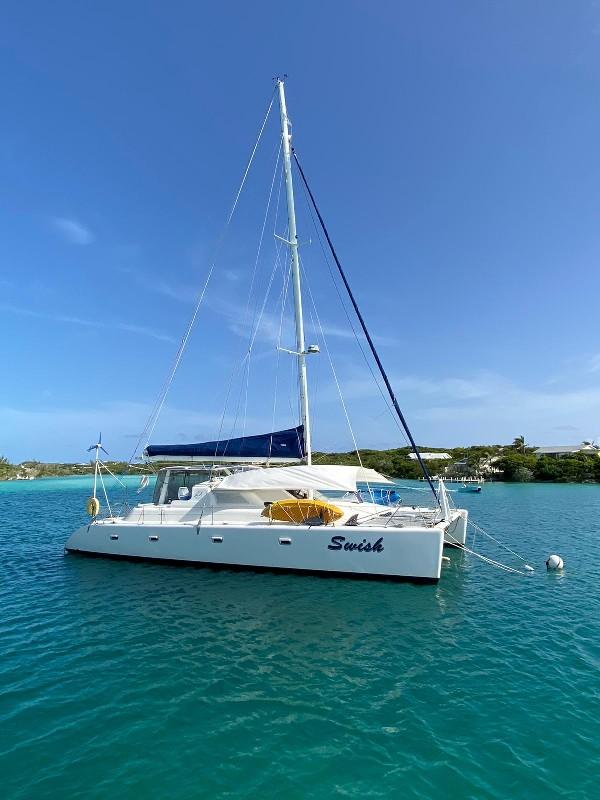
SWISH | Voyage Mayotte 47 47ft
Us $265,000.
Swish is a roomy, attractive, good sailing catamaran. The following were added in 2018: 1 3JH5E Yanmar diesel Rocna anchor 2 Glass propane tanks and hoses 2 50 gallon fuel tanks and hoses Maxwell electric windless 2 Harken electric winches Sails and sail cover running rigging, partial standing rigging dinghy Solar panels, wind generators Batteries Honda generator Galley salt water pump and fresh water filter Raymarine instruments,auto pilot,VHF,AIS,12v Spectra watermaker. 2021 equipment: Tohatsu outboard 2000w inverter battery charger 1 12v refrigerator Furuno radar 2 feathering propellers 150' 3/8 chain hauled and bottom painted Propane water heater
Specifications
- Length: 47ft
- Beam: 27' 3"
- Draft: 4' 5"
- Hull: Fiberglass
- Status: Active
View More Specs
- Designer: Voyage
MEASUREMENTS
- Length Overall: 47 ft
- Max Draft: 4' 5"
- Bridge Clearance Measure: 68' 0"
- Beam Measure: 27' 3"
- Fresh Water Tanks: 1 (100 Gallons)
- Fuel Tanks: 1 (100 Gallons)
Accommodations
- Number of cabins: 5
- Number of heads: 4
Layout & Accommodations
There are four queen berth staterooms with adjoining heads with showers.Opening hatch and port. Twin 12v.fans and LED lighting. One single captains quarter
Large galley with Corian countertop, abundant storage, 4 burner stove with oven, freshwater filter, saltwater tap. Top loading fridge and freezer. Additional refrigerator port hull.LED lighting and 12v fan.
Deck & Equipment
70lbs.Rocna anchor with 150′ 3/8 chain and 200′ 3/4″ nylon rode. Also Fortress anchor and rode. Maxwell windless. Harken electric winch for main sail and dinghy hoist. Harken electric winch for main and jib sheets with jams. Full width dodger. Two deck awnings. Large cockpit with hard top. Custom helm chair, closed cell foam cushions, cockpit stowage, cockpit table, stereo speakers, manual bilge pumps. Full width traveler. Aft deck access to engine rooms, dinghy lift extension boom. 2 aft deck showers
Electronics & Navigation
VHF, AIS, Iridium Go, 2 Garmin chart plotters, B&G chart plotter, Furuno radar, Riche Compass, SSB receiver, EPIRB
Electrical, Power & Plumbing
8 Trojen 6 volt house batteries. Separate starting batteries. 1000 watt Honda generator. 12v battery charger, solar regulator, 110v outlets, 2000watt inverter, 1000 amp solar panels, 2 Air Breeze wind generators. Propane water heater. Spectra watermaker
Engine & Mechanical
2, 3JH5E Yanmar diesels, 1100/300 hours. 2, 3 blade feathering propellers, Yanmar 31 Saildrives
Sails & Rigging
Mack Sails: main sail and genoa. Calvert Cruising Spinnaker. Mack sail cover.
Disclaimer:
The Company offers the details of this vessel in good faith but cannot guarantee or warrant the accuracy of this information nor warrant the condition of the vessel. A buyer should instruct his agents, or his surveyors to investigate such details as the buyer desired validated. Photos may not properly reflect the current condition of the actual vessel offered for sale. In some cases stock photographs may have been used.

Request More Information
Voyage mayotte 47, loan calculator, shelley joyce, share this boat, log in or create an account to save searches, connect directly with your broker and get regular updates on desired boats and services..
Username or Email *
Remember Me
Lost your password?
Not a member yet? Register now.
- Login with google
More Information
Recent News
The multihull company announces the sale of the first pre-owned balance 482.
The Multihull Company is pleased to announce the closing on the Balance 482 "SeaLife" We wanted to take a moment and thank her new owners on their amazing new catamaran, and to also congratulate our team handling the sale. TMC agent Andrew Hodgdon successfully represented the buyers on the sale of the vessel, while TMC CEO Will Miller represented the...
THE MULTIHULL COMPANY ANNOUNCED AS DEALER FOR THE VOYAGE 590
The Multihull Company is pleased to announce their appointment as a dealer for Voyage Yachts and their new model – the Voyage 590! The Voyage 590 is being celebrated as the ultimate, luxury sailing catamaran with all the comforts of home surrounded by panoramic views of paradise. She maximizes luxury accommodation and comfort, with the performance and blue-water capability characteristic...
6 Great Starter Catamarans
In early 2023, Cruising World approached us to seek our opinion on recommending a couple of brokerage catamaran options for first time catamaran buyers to consider when they first stepping into the catamaran market. Here are six boats hand-picked by The Multihull Company’s president and CEO, Capt. Will Miller, as excellent choices for brokerage-catamaran seekers. These are all worth a...
The Multihull Company Named Exclusive Dealer for Dolphin Catamarans and their New Model, the Dolphin 380
The Multihull Company, the world’s leader in multihull sales and service is excited to announce that it has been named the exclusive dealer for Dolphin Catamarans, a premier builder of high-quality catamarans, and their newest model, the Dolphin 380, designed by Philippe Pouvreau. "We are thrilled to be working with Dolphin Catamarans again and to be able to offer their...

Visit Us at the 2023 Miami Boat Show
The Multihull Company is thrilled to announce our participation in the Miami Boat Show, taking place on February 15-19, 2023. As one of the premier boat shows in the world, this event is the perfect platform for us to showcase our wide range of high-quality multihulls for sale. We are committed to providing our customers with the best experience possible,...
Introducing the Tao 452: On Display At The Annapolis Boat Show October 12 – 15, 2023
The Multihull Company is thrilled to unveil the new Tao 452, an exciting addition to the world of blue-water performance cruising catamarans. Meticulously engineered and crafted to perfection, the Tao 452 is set to redefine the catamaran experience for sailors worldwide. If you've ever felt the need for more sailing performance from your current production charter catamaran or been disappointed...
Join Us At The Annapolis Boat Show Aboard the Voyage 590
The Multihull Company is excited to announce its participation in this year's Annapolis Sailboat Show. The event will be held from October 12 - 15, 2023 in downtown Annapolis, and The Multihull Company will be showcasing the exquisite Voyage 590 catamaran from Voyage Yachts. The Annapolis Boat Show is a highly anticipated annual event that brings together boating enthusiasts, industry...
Ian Edmonson Joins TMC As Yacht Broker in Fort Pierce, FL.
The Multihull Company is thrilled to announce the appointment of Ian Edmonson as a yacht broker at its newly opened Fort Pierce location. Ian brings a unique blend of boating passion, brokerage experience, real estate expertise, and customer-focused mentality to the team. Ian's love for boating began at an early age and has only continued to grow, leading him to...
The Multihull Company Opens New Office in Virginia
We are thrilled to announce that Alan Prater has joined The Multihull Company team as a Yacht Broker in Virginia covering the Hampton Roads area of Virginia. With a lifelong passion for the water and a career spent in the US Navy and as a maritime training professional, Alan brings a wealth of experience and expertise to our team. Alan...
- Read All Articles
We take pride in our happy customers
Your team delivered on every mark. You’ve got an amazing broker in Mark Wattrus and I’m confident you will have continued success moving forward together. He was available 24/7 whenever I had questions. We had a great initial visit on the boat and his marketing plan and photos were superb
I bought a yacht that I had never seen. I did this because I trusted my broker Andrew Holland. It was not an easy job for Andrew, as I am an experienced boat builder and owner of previous yachts, but work in West Africa. Imagine how hard it was to communicate what I was looking for. Andrew came up with exactly what I wanted. He dealt with time delays, all my questions at odd hours, and was there for the survey. He reported honestly and professionally. After buying the yacht, I arrived at the boat on a Sunday night, after dark, after travelling from West Africa to the Caribbean, and found it was better than expected. He never pulled punches and made me aware of shortfalls. I expected to spend my one month leave working on the boat, but actually spent less than one week, and was able to spend 3 weeks sailing – wonderful bonus.
Thank you Andrew for putting up with all my questions, all my worries and all my crazy out of the time zone concerns – you were totally professional, but also I know that if and when we meet up, it will be like a friend finally meeting. You are always welcome on Aseka.
— Beverly Cory
Outstanding company with professional subject matter experts. If I were to buy or sell cruising sailboat, particularly a catamaran, Andrew would be my go to broker.
I have been sailing since I was a child and attended Massachusetts Maritime Academy. But when my wife and I began the process of purchasing an ocean cruising/racing catamaran, I realized that this is a world unto itself. Obviously, we needed to find someone knowledgeable to help us make an informed decision. More importantly, we needed someone honest and willing to put our interests before his or her own. I was lucky to work with Phil Berman at The Multihull Company. He repeatedly shunned the fast buck, choosing instead to work the long road to connect us with the “perfect boat”. I would be glad to recommend Phil and his company to anyone planning to purchase or sell a performance sailing machine.
— Eric Boutiette
Andrew Hodgdon was our broker when we bought our 2018 Lagoon 450F in Antigua in April 2922. He provided great service and was very attentive to our needs. We would highly recommend Andrew and the Multihull Company.
Trust & Expertise About Us
Successful relationships cannot exist without it. At The Multihull Company we base every relationship on a firm commitment to earning and retaining our client’s trust.
Advice of any kind is valuable only when grounded in hard-won expertise. It too, must be trustworthy. Trust and expertise define the heart and soul of The Multihull Company. We are a team of skilled professionals who thrive on providing expert, trustworthy advice and service to catamaran and trimaran sailors around the globe.
Follow us @themultihullcompany
- Pre-Owned Sales
Global Locations
New England +1-267-324-9067
Philadelphia +1-215-508-2704
Virginia +1-757-407-2526
Annapolis +1-703-350-8160
Charleston +1-843-364-4123
Brunswick +1-937-243-2213
Saint Augustine +1-910-477-2508
Fort Pierce +1-904-315-0997
West Palm Beach +1-561-312-0010
Ft. Lauderdale +1-484-744-2740
Miami +1-513-677-5338
San Francisco +1-215-508-2704
Seattle-Tacoma +1-206-297-1151
St. Martin +590 690 58 66 06
Grenada +1-473-457-3245
Puerto Rico +1-787-379-7348
Panama +1-305-735-1661
Trinidad +1-868-680-8909
Croatia +385 95 849 8009
France +33 (0) 6 73 97 17 30
Mauritius +1-215-508-2704
Australia +61 (0)7 5444 4822
Cape Town +1-843-614-2028
© Copyright 2024 The Multihull Company. All rights reserved.

Le lagon de mayotte
Les prestations mayotteexplo, sortie à la journée.
Journée exploration du nord ou du sud de Mayotte dans le confort d’un catamaran haut de gamme.
Matinale en mer
Profitez entre amis d’un brunch savoureux et copieux au lever du soleil, sur le lagon.
Hôtel au ponton
Votre chambre d’hôtel sur l’eau, cabine climatisée, salle de bain privative, petit déjeuner…
Apéritif coucher de soleil
Balade sur le lagon au crépuscule, accompagné d’un apéritif dinatoire avec punch, verrines…
Croisière en mer
Croisière tout confort à bord d’un catamaran de 180 m2 à Mayotte, Mohéli ou Nosy Bé…
Did You Know That We Offer Contract to Closing Services? Click Here to Find Out More.
Need Marine Financing? Apply Here With Our Partner, First Approval Source
- Catamaran Interviews
- Catamaran Reviews
- Buying Advice
- Selling Advice
- Woods Design Advice
- Americat 3014
- Balance 526
- Bali 40 Catspace
- Beneteau Blue II
- Broadblue 346
- Broadblue 38 Prestige
- Broadblue 385
- Broadblue 435
- Broadblue 46
- Catalac 10M
- Catalac 11M
- Catalac 12M
- Catalac 900
- Catana 42 S
- Chris White 48 Voyager
- Chris White 55
- Corsair F28 R
- De Villiers
- Dolphin 460
- Endeavour 30
- Endeavour 35 Victory
- Endeavour 36
- Endeavour 44
- Endeavour 44 TrawlerCat
- Fortuna 36 Island Spirit
- Fortuna 401 Island Spirit
- FP 32 Maldives
- FP 35 Tobago
- FP 37 Antigua
- FP 38 Athena
- FP 39 Fidji
- FP 40 Lavezzi
- FP 40 Lucia
- FP 40 Summerland MY
- FP 41 Lipari
- FP 42 Astrea
- FP 42 Venezia
- FP 43 Belize
- FP 44 Helia
- FP 44 Orana
- FP 46 Bahia
- FP 46 Casamance
- FP 48 Salina
- FP 56 Marquises
- FP 57 Sanya
- FP 60 Eleuthera
- FP Saona 47
- Gemini 3000
- Gemini 3200
- Gemini 3400
- Grainger 420 Mystery Cove
- Hirondelle 7M
- Lagoon 37 TPI
- Lagoon 42 TPI
- Lagoon 43 PC
- Leopard 39 PowerCat
- Leopard 45 Classic
- Leopard 47 PowerCat
- Leopard 51 PowerCat
- Leopard 53 PowerCat
- Maine Cat 30
- Maine Cat 41
- Matrix 450 Vision
- Matrix 760 Silhouette
- Maverick 400
- Maverick 420
- Maverick 440
- Nautitech 40
- Nautitech 442
- Nautitech 46 Open
- Nautitech 47
- Outremer 40
- Outremer 45
- Outremer 50 Standard
- Outremer 55
- Privilege 37
- Privilege 39
- Privilege 42
- Privilege 43
- Privilege 435
- Privilege 45
- Privilege 465
- Privilege 48 Transcat
- Privilege 482
- Privilege Serie 5
- Prout 31 Quest
- Prout 33 Quest
- Prout 34 Event
- Prout 35 Snowgoose
- Prout 37 Snowgoose
- Prout 37 Snowgoose Elite
- Prout 38 Manta
- Prout 39 Escale
- Royal Cape 45
- Royal Cape 530 Majestic
- Royal Cape Majestic 500
- Sailcraft 30 Iroquois
- Sailcraft 32 Comanche
- Sailcraft 35 Cherokee
- Sailcraft 41 Apache
- Sailcraft 44 Apache
- Wildcat 350
- Seawind 1000
- Seawind 1160
- Seawind 1200
- Seawind 1260
- Seawind 1600
- Solaris 36 Sunrise
- Solaris 36 Sunstar
- St Francis 44
- St Francis 48
- St Francis 50
- Stealth 11.8
- Heavenly Twins 26
- Ocean Twins 38
- Voyage 380 Maxim
- Voyage 400 Norseman
- Voyage 430 Norseman
- Voyage 450 Cabriolet
- Voyage 47 Mayotte
- Wharram 38 Tiki
- AMI 320 Renaissance
- Woods 22 Wizard
- Woods 35 Banshee
- Woods 35 Flica
- Woods 36 Scylla
- Woods 36 Vardo
- Woods 38 Transit
- Woods 40 Meander
- Xquisite X5
- Xquisite X5+
Brand: Voyage 47 Mayotte

Jump to Voyage 47 Mayotte Catamarans For Sale
The Mayotte 47 was the predecessor of the Voyage 500, with the difference being in the length of the transoms. They use the same hull mold. Her extra wide 28′ beam makes for a very stable platform under sail, and a wonderfully livable and spacious saloon, galley and cockpit, whilst at anchor. Fred Scholtz Marine hull. Scholtz was one of the largest boat builders in South Africa in his day. He sold the Mayotte molds to Voyage Yachts in 1996 who changed the yacht to be more suited a charter boat. For example, the outboard cockpit lockers were altered so as not to intrude on the aft berths.
Mayotte 47 (Florida)

S/V Swish is a 1996 Mayotte 47 catamaran for sale by owner. The Mayotte 37 is a roomy, well constructed, attractive, well cared for, comfortable, good performing cruising catamaran, the precursor to the Voyage 50. She features 4 queen sized cabins with ensuite baths and a single crew cabin. There is good access in the aft engine rooms and a wide, aft platform stores the dinghy and is very handy at anchor too.
The cockpit is roomy with custom hardtop supporting the solar panels. The main salon and galley up are very spacious. Four Queen berthed cabins with electric heads are comfortable, plenty of lockers, well ventilated with hatches, ports, and fans. Swish had a major refit in 2018, hauled and bottom painted in September 2022. She is well equipped and ready to voyage.
Used sail Catamaran for sale - SWISH
1995 voyage yachts mayotte 47 (47ft)-vessel summary.

BASIC SUMMARY
Dimensions & specifications, hull and deck configuration, engine details, generator details, dinghy details.

- Update Profile
- Email me when price drops
- Do you own a boat like this? Sell it now
Boat Description
The Company offers the details of this vessel in good faith but cannot guarantee or warrant the accuracy of this information nor warrant the condition of the vessel. A buyer should instruct his agents, or his surveyors to investigate such details as the buyer desired validated. This vessel is offered subject to prior sale, price change, or withdrawal without notice. Photos may not properly reflect the current condition of the actual vessel offered for sale. In some cases stock photographs may have been used.
Mechanical Disclaimer
Engine and generator hours are as of the date of the original listing and are a representation of what the listing broker is told by the owner and/or actual reading of the engine hour meters. The broker cannot guarantee the true hours. It is the responsibility of the purchaser and/or his agent to verify engine hours, warranties implied or otherwise and major overhauls as well as all other representations noted on the listing.
Dinghy Disclaimer
All dinghies are considered separate vessels and should have separate titles and documents. There is no guarantee as to the title of the dinghy on this vessel so Buyer accepts that while he may receive the dinghy included in the transaction, he may not receive the proper title to it.

In order to be called a true luxury performance offshore cruising catamaran, the width of the OE60’s hull has been carefully balanced for performance and splendid liveaboard comfort. Displacement, hull shape, and sail power are the key design features of an OE.
The advanced hydrodynamic shape of the hull, designed by world-renowned naval architect Germán Frers, utilizes the optimal length to beam ratio to minimize the wetted surface and deliver true performance. Instead of opting for fixed keels, a daggerboard configuration was chosen based on the advantages of providing lift, and lateral resistance versus drag.
This design is also more efficient by providing outstanding upwind performance with the daggerboards down, and best performance with daggerboards up in a reaching or running sailing angle. Another advantage with the daggerboards up is that the draught is less than 80 cm, allowing you to sail and anchor in shallow waters unreachable to most.
OE60 Specification
Please find the specification for the OE60 via this link:
Ready to Explore
The ocean explorer catamaran is an oceangoing expression of your dreams. an adventure at sea is filled with unforgettable memories you’ll cherish every day for the rest of your life., step inside, the interior design enhances your sailing experience by providing you with the most exceptional liveaboard comfort customized to reflect your taste., breaking the barriers, the advanced hydrodynamic shape of the hull, designed by world- renowned naval architect germán frers., it´s in the details, true craftsmanship from the very best.
The OE64 is the newest member of the line of luxury bluewater sailing catamarans. The 64 has a stronger focus on performance, having the Ocean Explorer 60 setting the benchmark for luxury catamarans, the 64 offers the same interior layout with a longer waterline and different deck layout. More focused on fast cruising and racing.
This model offers a great opportunity for a fast yet comfortable catamaran that can be eco friendly. Using materials like flax for a stiffer and lighter hull, yet gives you the edge on the racing course. Something to include in your modern eco-friendly catamaran is propulsion, there is a range of different hybrid and fully electric options.
The catamaran is designed for shorthanded sailing, and with experienced owners the yacht can be taken out by two persons only, but naturally for longer sailing it is always good to have more hands to make the journey more enjoyable. With all electric winches and furlers this yacht is ideal for both young families.

OE64 Specification
Please find the specification for the OE64 via this link:
The new frontrunner
The oe64 is the newest member of the line of luxury bluewater sailing catamarans., performance, focused on fast cruising and racing., no compromises, the perfect balance between speed and comfortability, luxury & comfort.
The interior has curves and clean, sweeping lines to match the sleek exterior.
Relax in comfort
Unwind after a long and fast day out at sea

The OE72 designed by German Frers offers innovative elements reflected in the accommodation and deck arrangement. Whether you plan to cruise stylishly around the world or race comfortably at 25+ knots offshore the OE72 will be the perfect platform to reach your goals. The accommodation volume offers ample space for comfort while the hull design measurements are focused on delivering high performance and stability. The fully customizable layout is designed to operate with only two crew to reduce operational expenses and weight from extra crew cabins and to increase interior volume and simplicity for the owner.
The OE72 offers many customizable options to transform this elegant platform into anything from a luxuriously spacious yacht with all the toys, to a highly efficient green circumnavigation machine to get off the grid entirely, or even into the ultimate microlight offshore racing multihull with the latest foiling package. Or perhaps an elegant combination of all of these elements! The four-cabin arrangement provides a generous amount of personal space and comfort. A three and five-cabin arrangement remains a part of the custom layouts available.
OE72 Specification
Please find the specification for the OE72 via this link:
Made for Adventurers
Grab the helm, discover new surroundings and fully experience your freedom on the water.
The new OE78 will embody the Scandinavian archetype of the OE60 and OE72 while expanding on the core features to become the ultimate maxi catamaran. Whether you plan to cruise stylishly around the world or race comfortably at 25+ knots offshore, the OE78 will be the perfect platform to reach your goal. The combination of high performance and abundant living and entertaining areas makes the OE78 comparable to a 100’+ performance cruising monohull while maintaining a very shallow draft to reach more destinations. Designed with the same efficient hull shape as her sister ships, the additional length and width create room for a spacious master cabin as well as VIP cabins, all with exemplary attention to detail in a timeless design.
The OE78 offers a unique balance between comfort and performance and will not be overtaken by any other catamaran in her class. The fully customizable layout is designed to operate with three to four crew depending on the intended use. The six-cabin arrangement provides a generous amount of personal space and comfort. A four, five, and seven cabin arrangement remains a part of the custom layouts available.

OE78 Specification
Please find the specification for the OE78 via this link:
The new flagship
The new OE78 will embody the Scandinavian archetype of the OE60 and OE72 while expanding on the core features to become the ultimate maxi catamaran
Explorer Motor Yachts
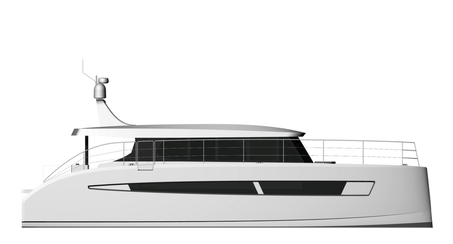
Catmar Explorer 55
Seaworthy, strong full custom ocean explorer motor catamaran for offshore and expeditions. made of certified aluminium, stable, homogeneous, torsion-free..
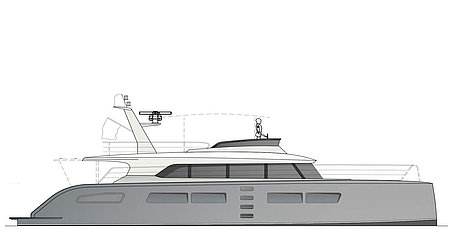
Catmar Explorer 64
Custom-designed explorer catamaran built from certified aluminium for world cruising. safe, strong, reliable, robust and fast. made in the netherlands..
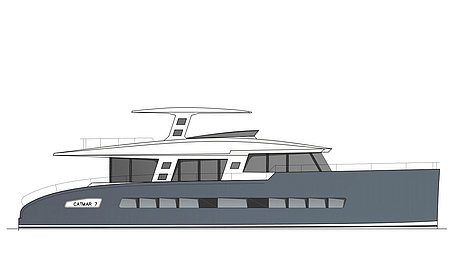
Catmar Explorer 78
Luxurious, spacious full-custom ocean explorer catamaran in certified aluminium for worldwide blue water cruising. 2,900 nm range at 9 knots. made in holland., sturdy explorer motor catamarans.
"Full custom" Explorer motor catamarans cannot be bought "off the rack" from a series production shipyard.
But you can let them be built customised:
Consult Catamaris®: brand, company, architect, designer, shipyard and manufacturer of sturdy "full-custom" made Explorer Motor Catamaran yachts for worldwide cruising, also to the Arctic and Antarctic. With experienced shipyards in Holland, Germany and Europe.
About Cookies (Ext:cat)
This website uses cookies. Those have two functions: On the one hand they are providing basic functionality for this website. On the other hand they allow us to improve our content for you by saving and analyzing anonymized user data. You can redraw your consent to using these cookies at any time. Find more information regarding cookies on our Data Protection Declaration and regarding us on the Imprint .
With the help of these cookies we strive to improve our offer for our users. By means of anonymized data of website users we can optimize the user flow. This enables us to improve ads and website content.
These cookies are needed for a smooth operation of our website.

The global authority in superyachting
- NEWSLETTERS
- Yachts Home
- The Superyacht Directory
- Yacht Reports
- Brokerage News
- The largest yachts in the world
- The Register
- Yacht Advice
- Yacht Design
- 12m to 24m yachts
- Monaco Yacht Show
- Builder Directory
- Designer Directory
- Interior Design Directory
- Naval Architect Directory
- Yachts for sale home
- Motor yachts
- Sailing yachts
- Explorer yachts
- Classic yachts
- Sale Broker Directory
- Charter Home
- Yachts for Charter
- Charter Destinations
- Charter Broker Directory
- Destinations Home
- Mediterranean
- South Pacific
- Rest of the World
- Boat Life Home
- Owners' Experiences
- Interiors Suppliers
- Owners' Club
- Captains' Club
- BOAT Showcase
- Boat Presents
- Events Home
- World Superyacht Awards
- Superyacht Design Festival
- Design and Innovation Awards
- Young Designer of the Year Award
- Artistry and Craft Awards
- Explorer Yachts Summit
- Ocean Talks
- The Ocean Awards
- BOAT Connect
- Between the bays
- Golf Invitational
- Boat Pro Home
- Pricing Plan
- Superyacht Insight
- Product Features
- Premium Content
- Testimonials
- Global Order Book
- Tenders & Equipment

Perini Navi delivers world's largest sailing catamaran ArtExplorer
Perini Navi 's 46.5-metre ArtExplorer has been delivered as the world's largest aluminium sailing catamaran. The yacht is now moored in Malta, according to BOATPro .
The yacht will be used as a floating art gallery that will undertake a two-year voyage to showcase "artistic experiences" to the world. Her owner, French businessman Frédéric Jousset, has shared his ambitious plans for the yacht, including Malta, Venice (for the Biennale) Marseille and Morocco. You can listen to the special podcast interview with the owner below.
The yard has explained that the yacht's flybridge will be used for virtual exhibitions, workshops and conferences, while the main saloon will house an art gallery, including an inaugural digital exhibit that was helmed by Nomi Daucé, curator of archaeology at the Louvre Abu Dhabi.
After her two-year trip, the yacht will be available for private yacht charter . Both interior and exterior design are by French architect Axel de Beaufort .
Sustainable considerations include a 65-square-metre sheet of solar panels on the deckhouse, which produces 12 kilowatts of power instantaneously and 200 kilowatts of energy per day. Lithium batteries allow for zero-emission electricity generation for more than six hours at full load, and the exhaust systems are fitted with filters that aim to "decrease emissions and particulate matter".
Technical numbers include a 17.3-metre beam and a 55-metre mast. A fully automated all-carbon sail plan can be operated by a single person, meaning the catamaran can sail at a speed of ten knots even in low wind conditions.
The order of the yacht, which is project managed by Fraser, was finalised in 2021. Speaking previously about the project, Laurent Bredy, Fraser's head of project management, said: "This is by far one of the most ambitious, creative and far-reaching projects I have had the pleasure to be involved in in my career to date."
Giovanni Costantino, founder and CEO of TISG said that the project was innovative on a "technical, engineering and human level" and "represents a further milestone made possible by the continuous stylistic and technological research as well as the professionalism of the entire team that realised the project".
He continued: "A work that demonstrates our ability to be protagonists also in the large sailing segment, as well as pioneers of cutting-edge solutions aimed at significantly reducing the environmental impact of yachts. Art Explorer is the result of continuous investment in the study and research of systems to reduce emissions and contribute to improving air quality and the health of our seas."
ArtExplorer marks the first unit to be built under the Perini Navi brand since its acquisition by The Italian Sea Group (TISG) in late 2021.
More about this yacht
Similar yachts for sale, more stories, most popular, from our partners, sponsored listings.

COMMENTS
MayotteExplo vous accueille sur un catamaran tout confort de presque 17 mètres de long et de plus de 8 mètres de large. Ses 5 chambres spacieuses et ultra confortables vous garantiront une expérience inoubliable sur le lagon de Mayotte. Avec une vue panoramique exceptionnelle sur l'océan, son espace de vie doté d'une cuisine toute équipée et ses nombreux équipements haut de gamme ...
The overall usable length of a catamaran is greater. Cats have a lower degree of heel in turns, and higher stability compared to monohulls. They also offer higher survivability if a hull is breached. All of these features are why nearly 70 percent of all high-speed passenger and vehicle ferries are catamarans.
UNIQUE DE MAYOTTE SUR UN CATAMARAN EXCEPTIONNEL, MAITAI. A1 Page accueil-2000. A3shutterstock_272405870-2000. A3shutterstock_272405870-2000. A3shutterstock_272405870-2000. MAITAI lance les CROISIERES PRESTIGES. 12 passagers maximum sur le catamaran au lieu de 24. Un beau catamaran en petit comité rien que pour vous.
Mayotte Explo, Pamandzi. 2,781 likes · 2 talking about this. De la journée découverte du lagon à la croisière "all inclusive", Mayotte Explo vous propose une aventure inoubliable sur son catamaran...
The Polish shipyard has just revealed a new go-anywhere multihull concept designed specifically for long-range cruising. The 164-footer is the second model in the Sunreef Explorer line, following ...
Home / Travel destinations / Cruise sailing and catamarans in Mayotte. Mayotte - Charter holidays, sailing yacht and catamaran cruises ... Mayotte is an archipelago kissed by the waters of the Indian Ocean and belonging to the French overseas territories. It is formed by two main islands, Grande Terre and Petite Terre, which together cover 376 ...
Après l'arrivée à l'aéroport de Mayotte et le transfert sur la base Sail Explorer de Mtsangabeach située au sud-ouest de l'île, vous vous installez dans le camp de base, véritable lodge "à l'africaine" (tentes de safari, mobilier de safari avec accès douches et toilettes) au milieu d'une cocoteraie de rêve. Ça commence bien...
About. S/V Swish is a 1996 Mayotte 47 catamaran. The Mayotte 47 is the precursor to the Voyage 50 as Voyage Yachts bought Mayotte around 1996. Overall identical except the Voyage has extended Sugar Scoops. She is a comfortable, good looking catamaran with an outstanding galley up and main salon, large well protected cockpit, and four en-suite ...
Introducing the Tao 452: On Display At The Annapolis Boat Show October 12 - 15, 2023. The Multihull Company is thrilled to unveil the new Tao 452, an exciting addition to the world of blue-water performance cruising catamarans. Meticulously engineered and crafted to perfection, the Tao 452 is set to redefine the catamaran experience for ...
Maitaicroisières. 3,577 likes · 736 talking about this. Maitai Croisières vous propose de découvrir le lagon de Mayotte sur un catamaran de croisière :
1995 Voyage Mayotte 47. US$265,000. ↓ Price Drop. Yachts Unlimited | Georgetown, Bahamas. Request Info. <. 1. >. * Price displayed is based on today's currency conversion rate of the listed sales price.
Croisière tout confort à bord d'un catamaran de 180 m2 à Mayotte, Mohéli ou Nosy Bé…. Visitez le lagon de Mayotte sur un catamaran haut de gamme. Sortie à la journée, matinale en mer, apéro coucher de soleil, croisière, hôtel flottant...
Photos & Details Contact Catamaran Owner. S/V Swish is a 1996 Mayotte 47 catamaran for sale by owner. The Mayotte 37 is a roomy, well constructed, attractive, well cared for, comfortable, good performing cruising catamaran, the precursor to the Voyage 50. She features 4 queen sized cabins with ensuite baths and a single crew cabin.
Garcia Explocat 52, the ultimate aluminium exploration catamaran, offers a new way to explore the world, previously reserved for monohulls. Explocat 52 A two-hulled version of the "Exploration" concept, the Explocat 52 combines all the benefits of multihulls for an unequalled result: space, safety, comfort, autonomy and performance.
Swish is a roomy, attractive, good sailing catamaran. The following were added in 2018: 1 3JH5E Yanmar diesel Rocna anchor 2 Glass Swish is a roomy, attractive, good sailing catamaran. The following were added in 2018: 1 3JH5E Yanmar diesel Rocna anchor 2 Glass ... Mayotte 47: Type of Yacht: Sail: Boat Condition: Used : Boat Status: Catamaran ...
Description. 1995 Voyage Mayotte 47. Swish is a roomy, attractive, good sailing catamaran. The following were added in 2018: 1 3JH5E Yanmar diesel. Rocna anchor. 2 Glass propane tanks and hoses. 2 50 gallon fuel tanks and hoses. Maxwell electric windless.
The OE64 is the newest member of the line of luxury bluewater sailing catamarans. The 64 has a stronger focus on performance, having the Ocean Explorer 60 setting the benchmark for luxury catamarans, the 64 offers the same interior layout with a longer waterline and different deck layout. More focused on fast cruising and racing.
Description. 1996 Voyage Mayotte. S/V Swish is a 1996 Mayotte 47 catamaran. The Mayotte 47 is the precursor to the Voyage 50 as Voyage Yachts bought Mayotte around 1996. Overall identical except the Voyage has extended Sugar Scoops. She is a comfortable, good looking catamaran with an outstanding galley up and main salon, large well protected ...
About Ocean Explorer Catamarans. Founded in the Jakobstad-Pietarsaari region of Finland, Ocean Explorer is the next generation of builders in a long history of renowned International luxury yacht brands from this part of the world. Designed by world renowned naval architect Germán Frers, known for beautiful and efficient yachts, and in ...
Custom-designed Explorer catamaran built from certified aluminium for world cruising. Safe, strong, reliable, robust and fast. Made in the Netherlands. Read more Catmar Explorer 78 Luxurious, spacious full-custom Ocean Explorer catamaran in certified aluminium for worldwide blue water cruising. 2,900 Nm range at 9 knots. ...
Following her debut at this year's Monaco Yacht Show, exclusive imagery of the 46.5-metre ArtExplorer has been revealed by her central agency for charter, Fraser.The world's largest aluminium sailing catamaran, ArtExplorer marks the first to be built under the Perini Navi brand since its acquisition by The Italian Sea Group (TISG) in late 2021. The yacht will be used as a floating art gallery ...